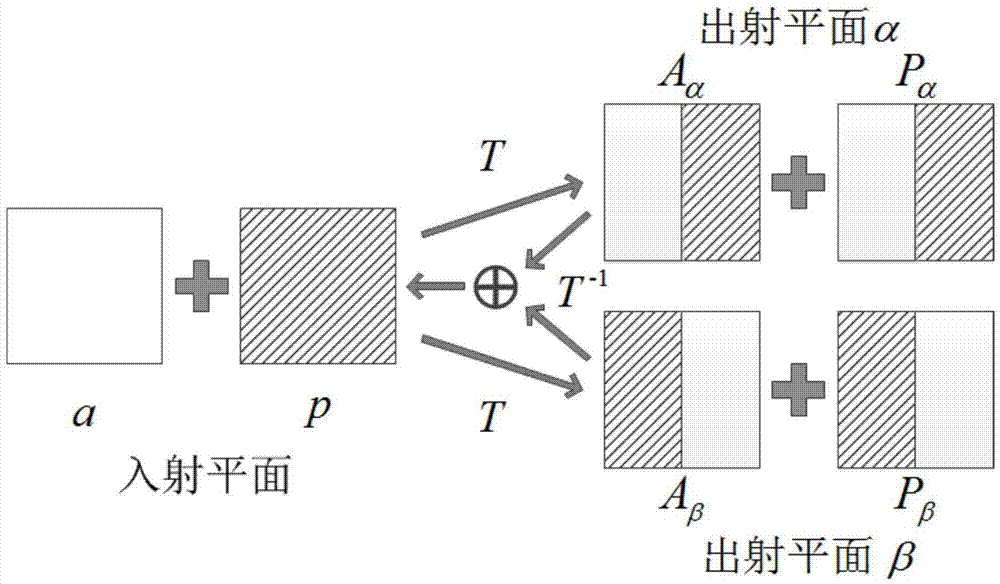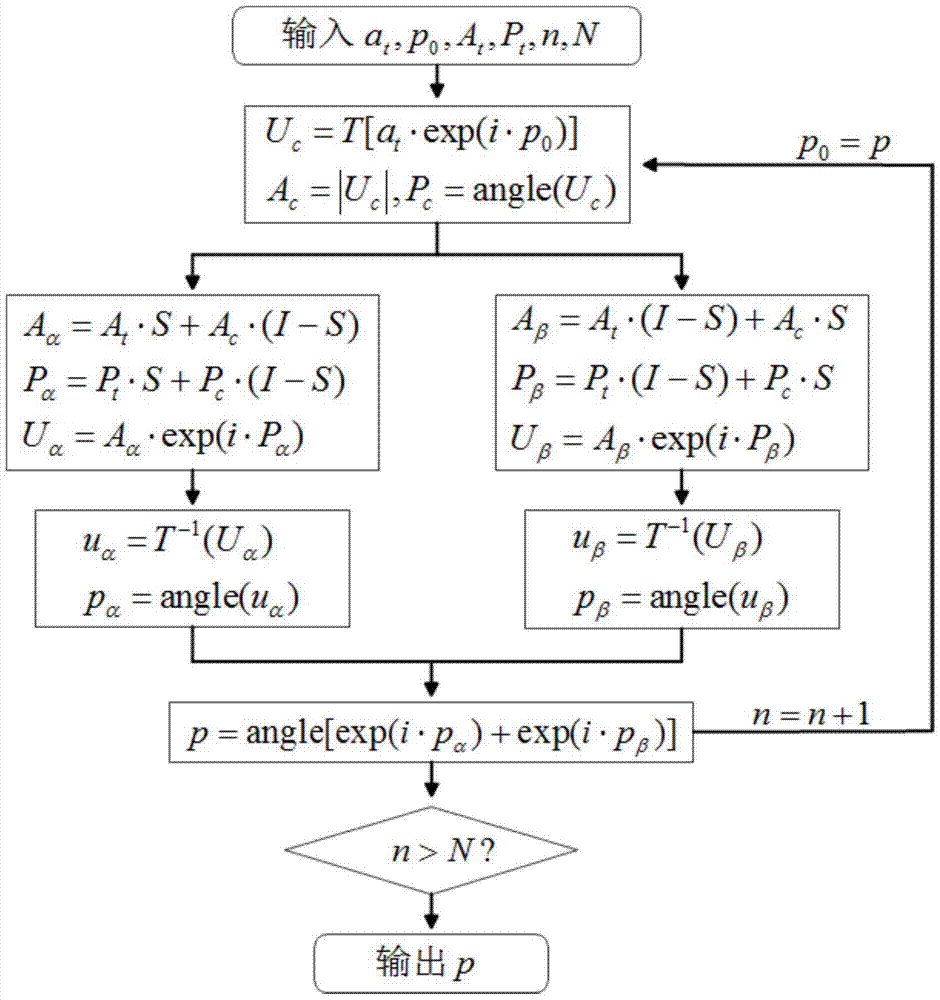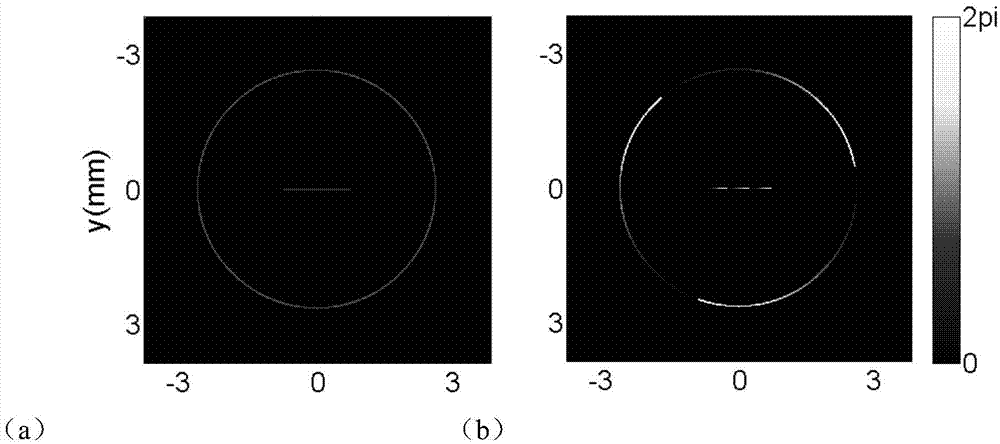Iterative algorithm for performing shaping on amplitude and phase of light beam simultaneously
An iterative algorithm and amplitude technology, applied in the field of iterative algorithms, it can solve complex problems such as the inability to generate beams
- Summary
- Abstract
- Description
- Claims
- Application Information
AI Technical Summary
Problems solved by technology
Method used
Image
Examples
Embodiment Construction
[0033] The present invention will be further described below with reference to the drawings and embodiments.
[0034] Such as figure 2 Shown is a flow chart of the algorithm of the present invention, an iterative algorithm for simultaneously shaping the amplitude and phase of the beam, using one input plane and two output planes to shape the beam, the constraints and values of the input plane The allocated free areas are the amplitude and phase of the incident light; the two output planes are α and β respectively, and the two are completely coincident. The amplitude and phase of the target beam are divided into two parts, which are used as the amplitudes of the two output planes. And phase constraints;
[0035] The distribution diagram of the constrained area and free area of the input plane and the output plane of the present invention is as follows figure 1 Shown figure 1 Where a’ and ‘p’ represent the amplitude and phase of the input plane, respectively, ‘A α ’And ‘P α ’Rep...
PUM
 Login to View More
Login to View More Abstract
Description
Claims
Application Information
 Login to View More
Login to View More - R&D
- Intellectual Property
- Life Sciences
- Materials
- Tech Scout
- Unparalleled Data Quality
- Higher Quality Content
- 60% Fewer Hallucinations
Browse by: Latest US Patents, China's latest patents, Technical Efficacy Thesaurus, Application Domain, Technology Topic, Popular Technical Reports.
© 2025 PatSnap. All rights reserved.Legal|Privacy policy|Modern Slavery Act Transparency Statement|Sitemap|About US| Contact US: help@patsnap.com



